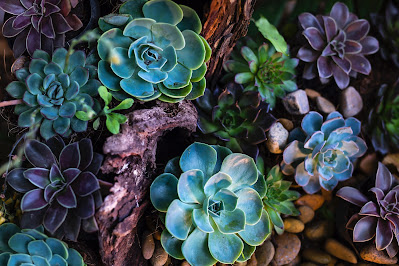Succulents: The Ultimate Guide for Low-Maintenance Plant Lovers
Succulents have taken the world of indoor gardening by storm, and for good reason. These adorable, low-maintenance plants are perfect for those who want to add some greenery to their homes without the hassle of constant upkeep. Whether you're a seasoned gardener or a beginner, succulents are a great way to start your indoor garden.
What are succulents?
Succulents are a type of plant that store water in their leaves, stems, or roots. This allows them to survive in arid climates, where water is scarce. They come in a wide variety of shapes, sizes, and colors, making them a popular choice for indoor gardens. Some of the most popular succulent varieties include Aloe Vera, Jade Plant, and Echeveria.
Why are succulents so popular?
There are several reasons why succulents have become such a popular choice for indoor gardening. Firstly, they're incredibly low-maintenance. Unlike other plants, succulents don't require frequent watering, and can even survive for weeks without being watered. This makes them perfect for busy people who want to add some greenery to their homes but don't have the time to devote to a demanding plant.
Secondly, succulents are incredibly versatile. They can be grown in a variety of containers, including pots, terrariums, and even hanging baskets. This means that you can find a place for them in almost any room in your home. Additionally, because they come in so many different shapes and sizes, you can create a unique and interesting garden that is perfectly suited to your style and decor.
Lastly, succulents are affordable. Unlike other indoor plants that can be quite expensive, succulents are relatively cheap, making them a great choice for those who want to start their indoor garden on a budget.
How to care for succulents
Caring for succulents is easy and straightforward.
Here are a few tips to help you keep your succulents healthy and happy:
Light: Succulents love bright, indirect light, so be sure to place them near a window where they can get plenty of sunlight. If you don't have a sunny window, you can also use artificial light to provide the necessary illumination.
Water: As mentioned, succulents don't need to be watered frequently. In fact, it's easy to overwater them, which can lead to root rot. To avoid this, wait until the soil is completely dry before watering your succulents. When you do water, be sure to water thoroughly so that the soil is saturated.
Soil: Succulents thrive in well-draining soil, so be sure to use a potting mix that is designed for cacti and succulents. Additionally, make sure that your pots have drainage holes so that excess water can escape.
Fertilizer: While succulents don't need frequent fertilization, you can give them a boost every few months by using a balanced, water-soluble fertilizer. Just be sure to follow the instructions on the label, as over-fertilizing can be harmful to your plants.
In conclusion, succulents are a great choice for anyone who wants to start an indoor garden. Whether you're a seasoned gardener or a beginner, these low-maintenance plants are easy to care for and provide a burst of green and color to any room in your home. So, why not start your succulent collection today?
Best regards,
Nimra Rana
Visit our homepage: Active Greenland – Explore latest updates



Comments
Post a Comment